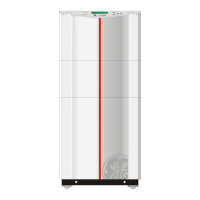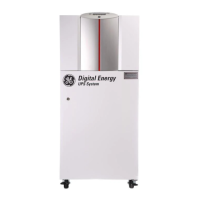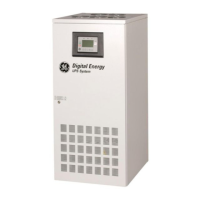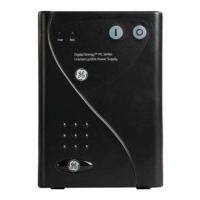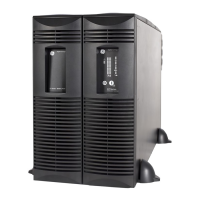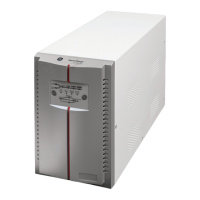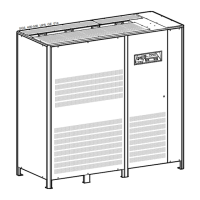5.4 Test Screens
These screens show the test procedure, either started from the service menu (front panel keys) or via the UPS
monitoring software (RS232/SNMP). The upper line indicates the kind of test, the second line its status.
Upper lines: second line:
GENERAL SYSTEM TEST START the test will start soon
QUICK BATTERY TEST ACTIVATED the test is running
CALIBRATE BAT TEST SUCCESSFUL the test has been completed successfully
BYPASS TEST FAILED the test has not been completed successfully
5.4.1 Battery test, general
Automatic test: Every 500 operating hours the UPS conducts automatic battery tests to ensure that the
batteries and the wiring are able to support power failures. The tests do not cause any interruption in the
functioning of the unit.
Manual test: A manual battery test can be activated
- either through an interface kit, via the RS232 or SNMP Interface Port (please refer to the
manual of your interface package), or
- via the front panel: see below
5.4.2 Quick battery test
From the standard menu first enter the service menu (press the ‘Down’ and 'Enter/Reset' keys simultaneously,
then press the ‘Down’ key until the following screen appears:
QUICK BATTERY
TEST PRESS ENTER
The enter/reset key confirms the selection, and the screen shows:
QUICK BATTERY
TEST START
The test status (indicated by the second line) can be:
TEST ACTIVATED = testing
TEST SUCCESSFUL = battery has been tested with positive result
TEST FAILED = the batteries should be replaced
NOT AVAILABLE = battery capacity too low to start the test
If the batteries are dangerously close to being worn out, a low priority alarm 'replace battery' will be generated.
The batteries must be replaced as soon as possible (see section 8.3).
NOTE: If the manual test is started immediately after installation or after a power failure, the UPS may generate
a false 'replace battery' alarm as the batteries have been (partly) discharged during transport/storage or during
the power failure.
OPM_LPE_11X_3K0_10K_1GB_V041 25 GE DE LP 11 UPS: User manual 4.1 (GB)
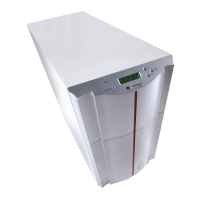
